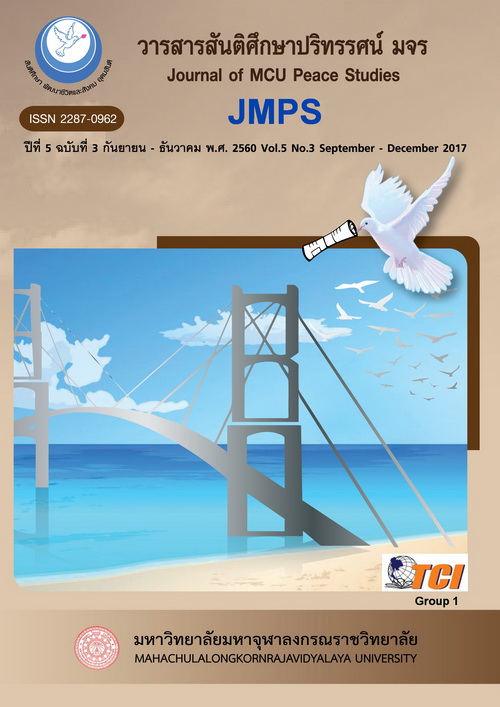A Model of Nonviolent Communication through Buddhist Psychology
Main Article Content
บทคัดย่อ
This qualitative research employed the documentary methodology incoherence with the phenomenological study in gathering the data from group discussion, in-depth interview, focus group discussion and connoisseurship. This study consists of 3 objectives namely (1) to analytically study the model of Nonviolent Communication of Dr. Marshall Rosenberg, (2) to analytically study the model of Nonviolent Communication in Theravada Buddhism and (3) to synthesize and present the model of Nonviolent Communication through Buddhist Psychology. Currently, one of the major problems of conflict leading to aggression mostly comes from nonviolent communicating behavior that can be found in every society.
The findings reveal that Nonviolent Communication through Buddhist Psychology, in fact, is the process of communication beginning at the heart of inner loving-kindness along with the cognitive awareness in communicating with others righteously, deeply, clearly and truthfully with the right time and the right place supporting with the right belief and right attitude that everything and everyone in this world has to be interdependence. The researcher uses the term to explain “A Model of Nonviolent Communication through Buddhist Psychology” as “PMC” which stands for “Peace and Mercy Communication” described by the model of “F+(PMC)2 → Interconnectedness” consisting of 8 components which are (1) Faith (2) Process Thinking (3) Positive Attitude (4) Mindfulness (5) Meditation (6) Empathetic Congruence (7) Compassion and results into (8) Interconnectedness.
Article Details
ทัศนะและความคิดเห็นที่ปรากฏในบทความในวารสาร ถือเป็นความรับผิดชอบของผู้เขียนบทความนั้น และไม่ถือเป็นทัศนะและความรับผิดชอบของกองบรรณาธิการ ยินยอมว่าบทความเป็นลิขสิทธิ์ของวารสาร


